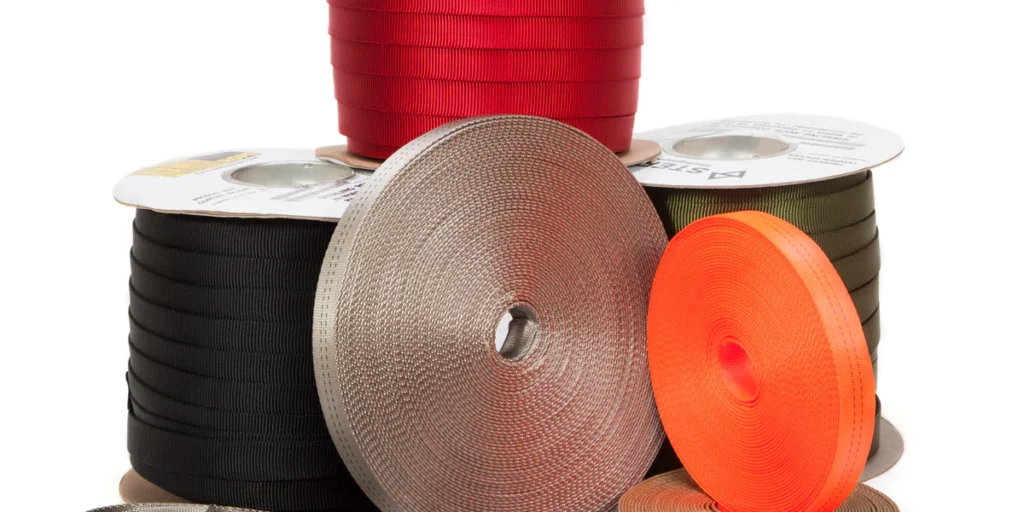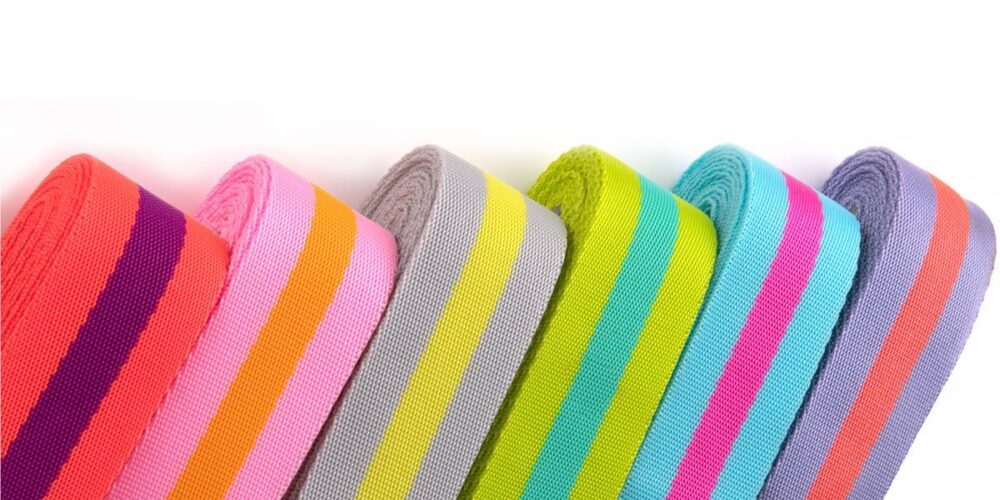Webbing is one of those items that not everybody needs on a continual basis but oddly enough everyone can use it at some point or another. Now, if you have a roll of webbing left over from a previous project, you might be wondering what else you can do with it. While it’s true that the main function of this nylon marvel is to make webbing straps, there are several other useful things to do with it. Keep reading to see what you can do with these straps or how you can help out a neighbour.
Normal (and Not so Normal) Things You Can Do With Webbing
If you’ve bought more webbing than you actually needed for the project you were working on, the good news is, it’s not going to go to waste. Here’s a list of interesting and functional uses for your left-over webbing.
1. Custom Tie Downs

If you’ve bought quality, strong webbing then all you need to do is add a few tie-down accessories and you’ll be able to create custom tie downs. You’ll need some of the following items:
- Ratchet buckles
- Standard ratchet hooks
- S-hooks
Creating your own ratchet straps according to regulated standards will enable you to do a variety of jobs such as hauling motorcycles, 4-wheelers and bicycles. Webbing has a thin profile, but it’s ideal for hauling jobs where you need both strength and security.
2. Create Storage Space on Garage Walls
For many homeowners, having enough storage space can sometimes be a problem. A simple way to overcome this is to attach open wall studs in your garage and attach webbing across the wall. Doing this will enable you to stack tools and rakes on the webbing.
Additionally, you can also use webbing for other small jobs in your tool shed or garage. Securing items to a wall for storage and fastening the webbing around a toolbox during transit to ensure tools don’t fall out are two examples.
3. Reinforce Camping Tents
If you’re going camping and not too confident that the weather will hold up, it’s a good idea to take some webbing with you to secure your tent. It’s as simple as using the webbing to reinforce the existing straps on the tents.
Since webbing is made from polyester, which makes it moisture-resistant, there’s no chance of mould or mildew if the straps get wet. You can also tie a webbing strap between two trees to hang two or three lanterns on. This is a quick and easy way to add light to your campsite.
4. Custom Length Leases for Dogs

Many dog owners often struggle to find the right size harness or leash for their dogs. This is especially the case for larger dogs. That said, it might be a good idea to make your own leash, specially created to your pooch’s unique measurements. And webbing is a very appropriate material to use for this purpose.
5. Lift Heavy Loads on the Farm
If you live or work on a farm, then you know there’s always a lot of heavy lifting that needs to be done. Whether it’s piles of wood or bales of hay, using webbing makes the job so much easier. Simply tie the items together with webbing and then hold on to the straps to lift and move them.
6. Repair Hammocks or Lawn Chairs
Have you ever had a lawn chair that’s in perfect condition except for a small hole in the middle where one of the slats has broken? Instead of throwing a perfectly good chair away, simply use a piece of webbing to create several straps to stretch between the two broken pieces. In short, you’ll be patching the seat, enabling users to sit comfortably.
While you’re repairing garden chairs, you may as well give your hammock a once-over to check if it needs fixing. Webbing is excellent for strengthening your hammock and giving it a new lease on life!
7. Replace Bag Handles & Straps

How many times have you thrown out a perfectly good bag because the straps broke or tore? Why not use webbing to create a new strap? Because webbing is strong, it’s ideal for use on camera bags, music equipment bags and even school bags.
8. Use Webbing to Create Rafter Storage
Do you have rafters in your garage or garden shed? Simply use your webbing to create storage space between the rafters. Here you’ll use some webbing straps to hold the items that need storage and then a few straps to tie them to the rafters. Depending on how you’re going to do it, several S-hooks might come in handy to make the process easier.
Final Thought
There is an endless list of ideas for the things you can do with your leftover webbing. Aside from our basic ideas, you can easily find many items around your home that you can fix or strengthen with some webbing. All it takes is some out-of-the-box thinking! Please share your ideas with the rest of us!





